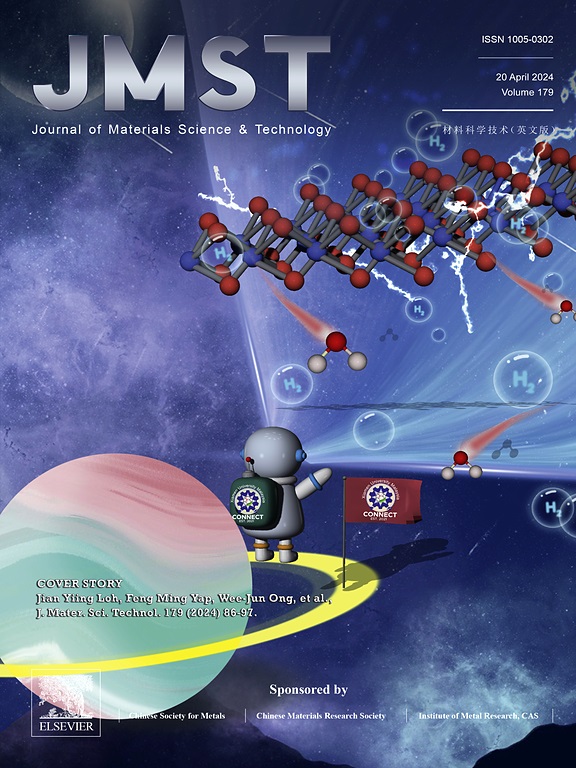快速制备具有超高Q × f值和温度稳定性的CaTiO3-SmAlO3微波陶瓷,用于毫米波通信应用
IF 11.2
1区 材料科学
Q1 MATERIALS SCIENCE, MULTIDISCIPLINARY
引用次数: 0
摘要
技术上重要的钛酸盐基微波陶瓷在漫长的烧结过程中通常会因诱导氧空位而导致介电性能的恶化。采用微波烧结技术实现了0.7CaTiO3-0.3SmAlO3 (CT-SA)陶瓷的快速致密化,显著抑制了氧空位的产生。微波烧结的CT-SA陶瓷中的氧空位浓度低于常规烧结的陶瓷,从而降低了离子传导和电阻。微波烧结的CT-SA陶瓷表现出较好的温度稳定性,这是由于与氧空位浓度相关的空间电荷极化减弱,以及与缺陷极化相关的介电弛豫过程减弱。微波烧结1 h的CT-SA陶瓷表现出优异的介电性能:Q × f=49,300 GHz, εr=42.8, τf=0.91 ppm/°C,与常规烧结4 h的陶瓷相比,Q × f值提高了15%。特别是微波烧结制备的CT-SA陶瓷介电谐振器天线,其辐射效率为>;90%,谐振频率为7.85 GHz (S11= - 33.98 dB),显示出良好的毫米波通信应用潜力。本文章由计算机程序翻译,如有差异,请以英文原文为准。

Rapid fabrication of CaTiO3-SmAlO3 microwave ceramics with ultra-high Q × f values and temperature stability for millimeter-wave communication applications
Technologically important titanate-based microwave ceramics usually suffer the deterioration of the dielectric properties from the induced oxygen vacancy during the lengthy sintering process. Rapid densification that could significantly suppress the generation of oxygen vacancies in 0.7CaTiO3-0.3SmAlO3 (CT-SA) ceramics is realized by microwave sintering. The oxygen vacancy concentration in CT-SA ceramics sintered by microwave sintering is lower than that of ceramics by conventional sintering, thereby reducing the ion conduction and electrical resistance. CT-SA ceramics sintered by microwave sintering demonstrate better temperature stability, resulting from the attenuated space charge polarization related to oxygen vacancy concentration and the weakened dielectric relaxation processes associated with defect polarization. CT-SA ceramics sintered by microwave sintering for only 1 h exhibit excellent dielectric properties: Q × f=49,300 GHz, εr=42.8, and τf=0.91 ppm/°C, which is 15% enhancement in Q × f values compared to ceramics by conventional sintering for 4 h. Especially, CT-SA ceramic dielectric resonator antenna fabricated by microwave sintering with >90% radiation efficiency was resonated at 7.85 GHz (S11=−33.98 dB), demonstrating the promising potential for millimeter-wave communication applications.
求助全文
通过发布文献求助,成功后即可免费获取论文全文。
去求助
来源期刊

Journal of Materials Science & Technology
工程技术-材料科学:综合
CiteScore
20.00
自引率
11.00%
发文量
995
审稿时长
13 days
期刊介绍:
Journal of Materials Science & Technology strives to promote global collaboration in the field of materials science and technology. It primarily publishes original research papers, invited review articles, letters, research notes, and summaries of scientific achievements. The journal covers a wide range of materials science and technology topics, including metallic materials, inorganic nonmetallic materials, and composite materials.
 求助内容:
求助内容: 应助结果提醒方式:
应助结果提醒方式:


